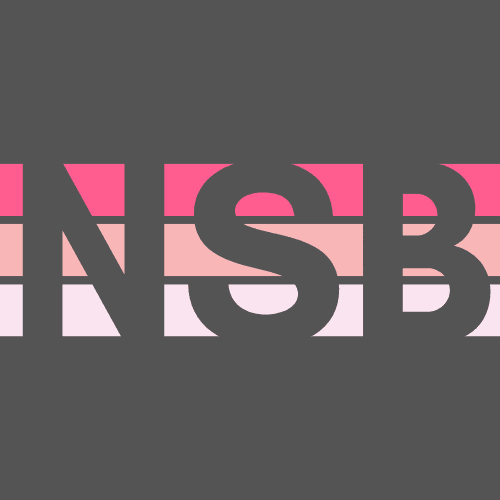There are a variety of meditation methods that suit most people. However, there is no “right way” to meditate, meaning someone can explore the different types until they find one that works for them.
Meditation is a calming exercise that reduces stress and helps us to find inner peace.

For beginners, it can be beneficial to learn about the different styles of meditation in order to find the techniques that we most enjoy.
Meditation has been around for thousands of years and can come in all kinds of shapes and forms.
There are countless thousands of different meditation techniques that have been used by cultures around the world throughout history, far too many different ways for us to master them all.
Many of these techniques come down to a relatively small collection of formats that we can study and practice in our own way.
Mindfulness meditation
Mindfulness is a form of meditation to remain aware and present in the moment.
Rather than dwelling on the past or worrying about the future, mindfulness encourages awareness of our present surroundings.
Another usefull tool is a lack of judgment. Rather than reflecting on the annoyance of a long wait, we will simply note the wait without judgment.
Mindfulness meditation is something people can do almost anywhere. For example, while waiting in line at the post office, a person might calmly notice their surroundings, like the sights and sounds.
A form of mindfulness is involved in most types of meditation. For instance, breath awareness encourages us to be aware of our breathing, while progressive relaxation draws attention to areas of tension in the body.
Because mindfulness is a theme in many types of meditation, it has been studied extensively. Research has found that it can:
- Improve focus
- Reduce fixation on negative emotions
- Improve memory
- Lessen impulsive and emotional reactions
- Increase relationship satisfaction
Guided meditation
The voice of a coach, teacher or Recordings are available via videos, podcasts, apps, and audio recordings, act as a guide in directing various types of meditation.
Someone may use guided meditation for mindfulness . People who are new to meditation may wish to start with a guide in some form.
Mantra meditation
Mantra meditation involves the continuous repetition of a set of syllables, phrases, or affirmations either aloud or silently.
A person may perform it with or without religious content.
It works by overriding and redirecting negative thoughts. A 2022 study found it produced small to moderate decreases in anxiety, as well as small reductions in depression. However, study bias and the scarcity of research may weaken these findings.
Loving-kindness meditation
This type is also known as Metta meditation. The goal is to cultivate an attitude of love and kindness toward everything, even our enemies and sources of stress.
While breathing deeply, open your mind to receive loving kindness. Then send messages of loving kindness to the world, specific people, or loved ones.
In most forms of this meditation, the key is to repeat the message like a mantra, until the individual feels an attitude of living kindness.
Candlelight Meditation
To enhance focus, give candlelight meditation a try.
With a lit candle, the flame of the candle becomes the central point of focus, and it can be quite easy to notice when we have lost our focus.
This form of meditation serves to both strengthen the muscle of focus we possess, as well our eyes and provides a natural recluse into solitude and quiet.
In this technique, the flicker of the candle flame becomes the natural anchor for our attention. Make sure to only practice this somewhere that is fireproof & fire safe, where you can be sure that the candle will not be a hazard of any kind (even if you fall asleep), in either low light or darkness.
Some people who prefer this practice simply because of the simplicity, and strengthening of focus it naturally brings to their daily practice.
Transcendental meditation
Transcendental meditation (TM) allows your mind to naturally transcend, or easily settle inward, to quieter and quieter levels of thought, until you experience the most silent and peaceful level of your own awareness.
It is a spiritual form of meditation where individuals remain seated and breathe slowly. The goal is to transcend or rise above the person’s current state of being.
During a session, you focus on a mantra. If you are working with a guide or teacher, they will determine the mantra based on a set of factors.
An alternative form allows people to choose their mantra. This more contemporary version is not technically transcendental meditation, though it may look substantially similar.
A person might decide to repeat “I am not afraid of public speaking” while meditating for example.
Unlike other forms of meditation, the TM technique involves no concentration, no control of the mind, no contemplation, no monitoring of thoughts. It is completely effortless.
Progressive muscle relaxation
Also known as Vipassana or body Scanning, during a progressive relaxation session, practitioners start at one end of their body, usually their feet, and work through the whole body.
Some forms of progressive relaxation require someone to tense and then relax muscles. Others encourage a person to visualise relaxation, lights or a wave, drifting over their body to release tension.
Progressive relaxation can help to promote generalised feelings of calmness and relaxation. It may also help with chronic pain. Because it slowly and steadily relaxes the body, some people use this form of meditation to help them sleep.
Yoga
One thing few people know is that the yoga many of us practice in today, originates as a meditative practice.
Historically is was utilised as an exercise of mind and body in India and its surrounding area yoga was often an appetiser to sitting meditation practice.
Yoga is itself rooted in breath awareness and focus, making it one of the best examples of movement meditation.
Kundalini Meditation
This is closely tied to kundalini yoga, and has the purpose of helping more energy throughout the body more naturally.
The release and healthy flow of this energy is associated with relief and release from mental, physical, and spiritual issues.
When performing kundalini meditation, we are actively utilising practices that draw energy from the natural energy reserves at the base of the spine.
This energy is said to contribute to an enhanced level of consciousness that helps us unleash creativity in the world more easily.
Oftentimes, these meditations involve movements of the arms and body, chanting, and specific breathing patterns. Kundalini has been practiced for thousands of years, and you will hear many kundalini meditation teachers discuss something called a “kundalini awakening”, which is when a rush of energy and conscious understanding blood the body and mind, bringing the person into a new, refreshed, and non-judgmental state of spiritual awareness.
Sleep Meditation
One of the most highly searched forms of meditation is meditation for sleep. Sleep meditation is a blanket term that is used to describe any meditation that is designed to help with sleep or is meant to be done before bed to help relax.
This is most likely because of the epidemic of insomnia in the modern world, of which mindfulness has become a primary solution.
Sleep meditations come in all shapes and sizes and can be found across the web in nearly every meditation tool or app.
Zen meditation
This ancient Buddhist tradition involves sitting upright and following the breath, particularly the way it moves in and out of the belly, and letting the mind “just be.” Its aim is to foster a sense of presence and alertness.
Which one appeals to you most? Let me know in the comments.



